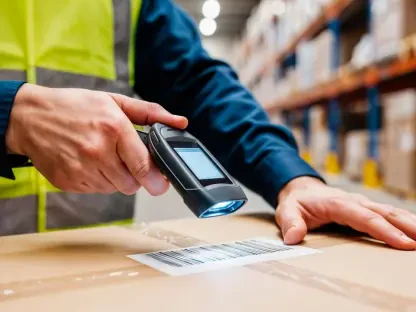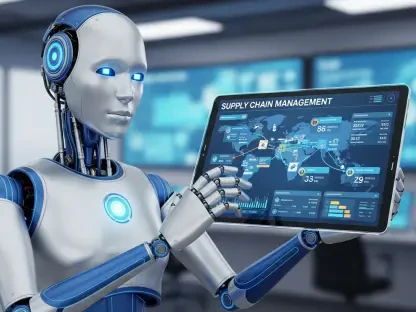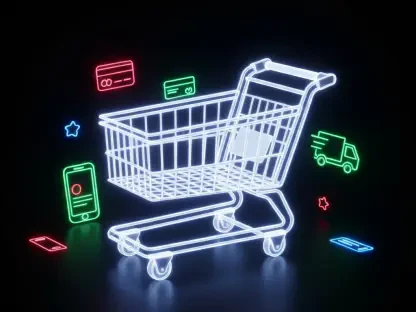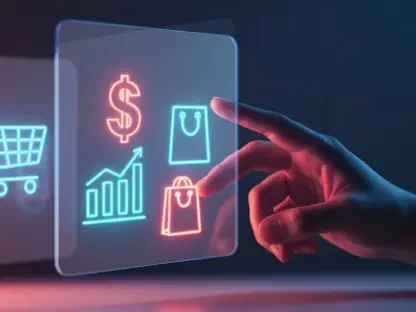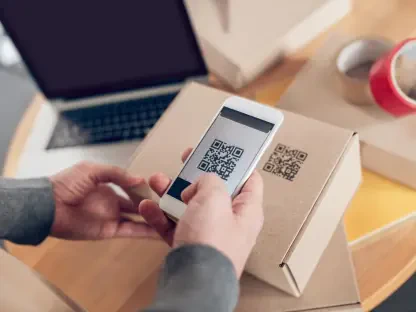The concept of checkout-free technology in retail, once seen as a futuristic novelty, has steadily advanced and become a significant topic of discussion in the retail industry today. This innovative approach promised to revolutionize the shopping experience by eliminating traditional checkout processes, envisioning a seamless interaction where customers could take their items and leave the store without stopping at a cash register. Although the early strides of checkout-free technology faced some challenges, particularly with initial ventures not fully meeting expectations, its allure remains undeniable. As consumer expectations evolve and technology matures, industry players are continuously evaluating the viability and potential benefits of a cashierless experience. Today’s consumer is driven by convenience and efficiency, making the rapid development of this technology a focal point for retailers aiming to enhance customer satisfaction and operational effectiveness. Delving deeper into how checkout-free technology functions and its impacts offers insight into its transformative potential in the retail space.
The Rise and Challenges of Checkout-Free Technology
Checkout-free systems, while initially met with enthusiasm, have had a tumultuous journey. The idea was first popularized by companies such as Amazon, whose “Just Walk Out” technology captured significant public attention. However, early implementations encountered various obstacles that hindered progress. Infrastructure challenges, substantial upfront investments, and technical issues, especially concerning product recognition and customer preferences, often limited these systems’ scalability and profitability. Additionally, some firms, like Grabango, struggled to meet investor expectations due to slower-than-anticipated expansion, showcasing the economic hurdles that come with pioneering such technologies. Despite these initial setbacks, the core promise of eliminating checkout lines and offering a more streamlined shopping experience continues to drive interest and innovation in the sector. Retailers are keen to explore solutions that can enhance operational efficiencies, increase throughput, and provide superior customer service. Therefore, understanding the obstacles that early adopters faced is crucial in addressing potential hurdles for current and future implementations.
One of the significant challenges these systems face involves accurately identifying and pricing items, particularly in grocery and bulk shopping environments. Products sold by weight, such as fresh produce, add complexity to AI systems responsible for monitoring transactions. The diversity of items and the need for high precision in product tracking have made it imperative for technologies to evolve continually. Nevertheless, the advancement of artificial intelligence holds promise for overcoming these technical challenges. AI’s capability to learn and adapt to varied shopping environments can substantially improve accuracy and efficiency, paving the path for broader adoption of checkout-free systems. As AI’s role continues to evolve, it becomes a pivotal component in refining technologies that support this seamless shopping experience. These enhancements promise to address current limitations, affirming the potential for checkout-free systems to redefine the retail landscape over the coming years.
Technological Innovations and Market Dynamics
In response to these early challenges, technological innovations have been relentless, with many companies actively pursuing new solutions. The technological basis of checkout-free systems typically involves an intricate network of cameras and sensors. These devices work synergistically to monitor customer movement and record product selections. Companies such as Zippin and Cantaloupe Technologies are at the forefront of providing such solutions, particularly in environments like stadiums and stores where customer turnover is high and efficiency is critical. These innovations not only aim to reduce queue times but also to optimize space utilization within retail environments, thereby enhancing the shopping experience while maximizing revenue potential. The conspicuous increase in technological sophistication is supported by significant investments and interest in developing more reliable and efficient systems to cater to the nuanced demands of the retail sector.
Despite notable advancements, the market dynamics for checkout-free technology are quite complex. On one hand, retailers see its potential to reduce labor costs significantly, address staffing challenges, and improve customer satisfaction by curtailing wait times. On the other hand, the need for sizable initial investments and the associated technical concerns have made many players in the industry cautious. Additionally, consumer adoption rates of this novel shopping experience are not as high as anticipated, which may reflect a disparity between technological capability and consumer readiness. While e-commerce is growing, in-person shopping remains prevalent, indicating the importance of optimizing physical store environments. Retailers, constantly operating under tight profit margins, must weigh these factors as they consider implementing or expanding checkout-free systems. The convergence of these elements will affect the pace and scale at which these systems become mainstream in the future retail landscape.
Business Applications and Benefits
The potential business applications of checkout-free technology extend beyond general retail environments, holding particular significance in settings characterized by high customer turnover and the necessity for quick service. Locations such as stadiums, airports, and convenience stores can greatly benefit from the streamlined checkout process, which reduces wait times and increases the volume of completed transactions during peak periods. This efficiency translates into enhanced customer satisfaction and potentially higher revenue, as more consumers can be serviced in a given timeframe. Retailers in these environments are keenly aware of the competitive advantage provided by technological improvements that address consumer impatience and demand for efficiency.
The benefits are not solely limited to customer-facing improvements. Internally, businesses can leverage checkout-free systems to achieve considerable savings in operational costs. The reduction in the need for human cashiers allows retailers to reallocate labor resources more efficiently, focusing on other critical areas like customer service and inventory management. Labor cost reduction is particularly appealing in sectors facing increasing wage pressures and where staffing for undesirable shifts, such as overnight hours, poses challenges. By easing these operational burdens, checkout-free technology can enhance a retailer’s financial performance and scalability. The synergy of these business applications underscores the multifaceted value proposition of checkout-free systems, strengthening their attractiveness for adoption across various retail environments.
Future Prospects and Evolution
Once viewed as a futuristic novelty, checkout-free technology in retail has steadily gained traction, emerging as a hot topic in today’s retail industry. This cutting-edge approach promised to transform the shopping experience by doing away with traditional checkout lines. Instead, it envisioned a seamless process where shoppers could simply grab their items and leave the store, bypassing the cash register entirely. Despite initial endeavors not fully living up to expectations and facing several hurdles, the appeal of cashierless shopping remains strong. As consumer expectations shift and technology advances, retailers are constantly assessing the viability and benefits of this automated experience. Modern consumers prioritize convenience and efficiency, making checkout-free technology a focal point for retailers aiming to boost customer satisfaction and streamline operations. Exploring how this technology works and its broader implications sheds light on its transformative potential within the retail landscape, marking a significant evolution in how we shop.


